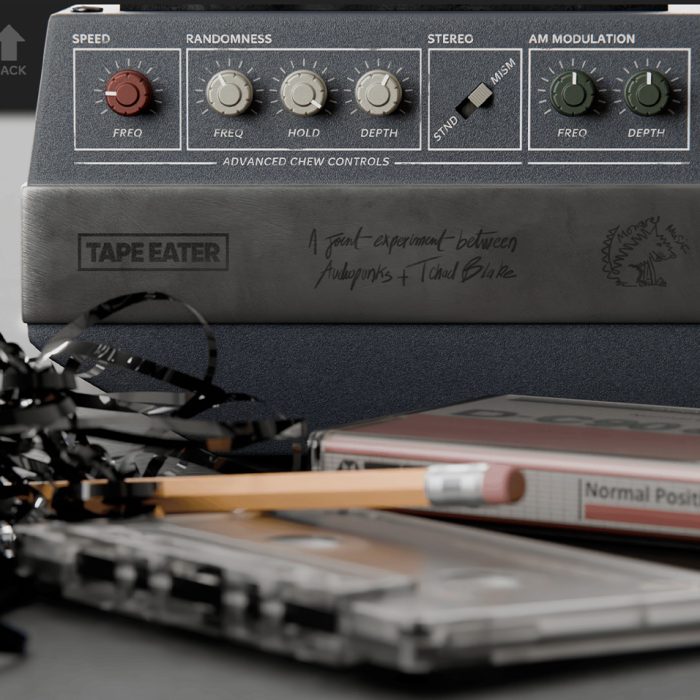Tape Eater Manual
User Manual
Table of Contents
Tape Eater Cassette plugin
Tape Eater is a sonic experiment from Audiopunks and Tchad Blake, a unique hybrid between physical modeling of a cassette tape simulation that embraces the unpredictable character of malfunction.
At its heart, Tape Eater features two distinct engines:
- The Cassette Tape Section: a physical model of a real tape path hidden under the lid, recreating the depth, bias, tone shaping, azimuth drift, and natural compression that make tape machines so engaging. This part of the plugin is both suited for transient and melodic instruments.
- The Chew Engine: a modulation system inspired by the moment a cassette gets “eaten.” It generates organic pitch instability, warble, and random dropouts through physically-driven algorithms “Magnetosis”, extended with Advanced Chew Controls for randomness, stereo drift, and AM modulation. This part of the plugin is mostly suited for melodic instruments.
Together, they form an expressive instrument equally capable of subtle warmth, haunting modulation, and total tape chaos.
Tape Eater also includes a built-in speaker simulator and input/output drive stage, allowing users to push the signal like a true hardware box.
Designed to feel tactile and alive, Tape Eater invites artists to explore imperfection not as a flaw, but as a new dimension of sound.
A Tchad Blake x Audiopunks Collaboration
Born from a collaboration between Tchad Blake and Audiopunks, it began with Tchad’s habit of emulating the sound of a swallowed cassette to bring movement and emotion to synths and guitars, and evolved into a special cinematic cassette deck with features that celebrate the beauty of imperfection and the poetry of broken sound.
The plugin's key features

Chew artefact amount
Chew depth
Full octave pitch bend
Magnetosis: Random pitch drops modulation
Speaker simulation
Tape saturation
Tape dropouts speed
Playhead angle
Tape Bias Adjustement
EQ Section
Internal MixKnob before Tape Play/stop
Tape Play/Stop
Chew Advanced Controls

Chew Speed
Chew Randomness variation control
Standard keeps the same modulation for both channels.
Mismatched applies different modulation to the L&R.
Standard keeps the same modulation for both channels.
Mismatched applies different modulation to the L&R.
Chew amplitude modulation